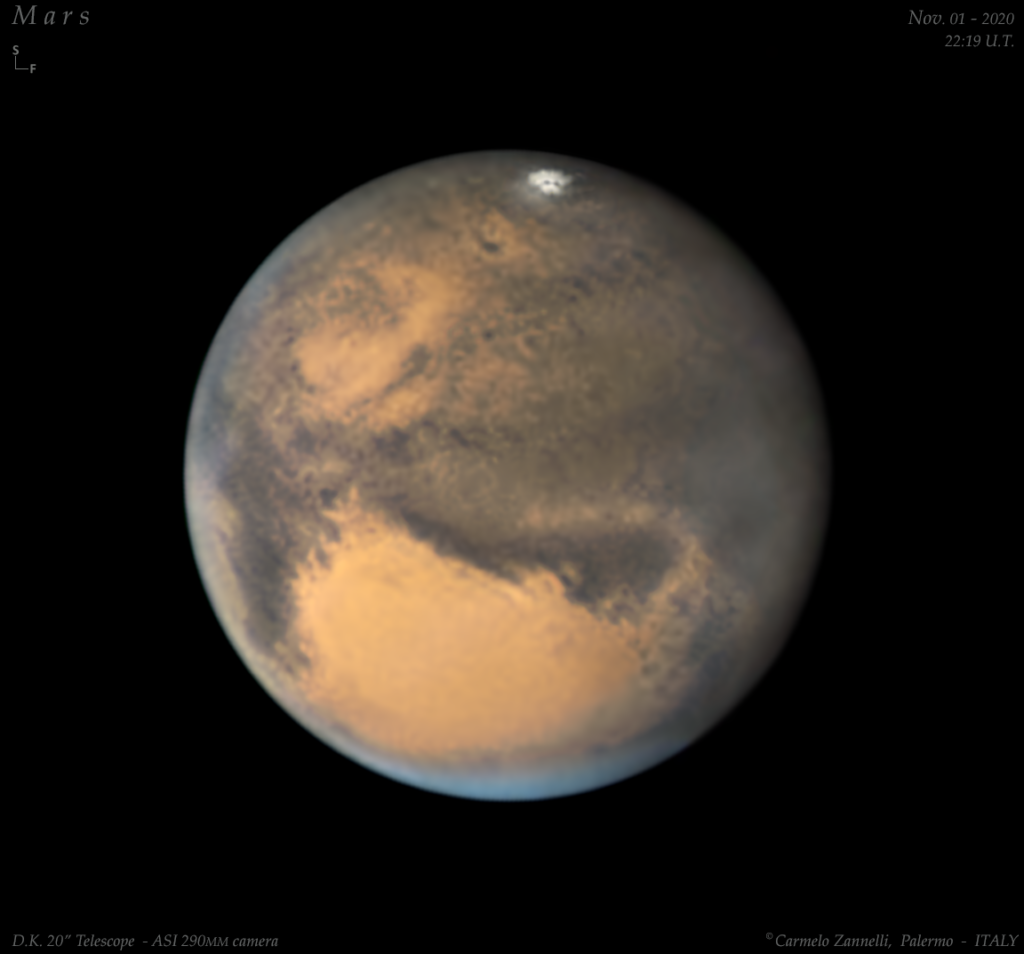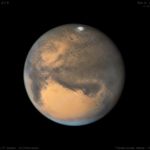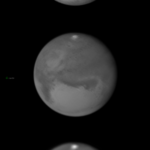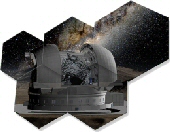In loving memory of my father
*******************************************************
Reworked on June, 30th – 2021
Italiano:
Marte si allontana sempre più dalla Terra, dopo l’avvicinamento massimo avuto il mese scorso. E’ tuttavia ancora molto bello e ben visibile, ogni sera, appena fa buio in direzione Est, già abbastanza alto.
Qui è ritratto il 1° novembre, col telescopio principale del mio osservatorio a Palermo, un Dall-Kirkahm da 51 cm, utilizzato ad F/40 circa (circa 20 metri di focale) in condizioni di buona trasparenza ma sufficiente seeing. Sono visibili molti particolari della sua superficie, centrati sulla “Deucalionis Regio” e appena più in basso, visibile come un lungo braccio a proboscide, il “Sinus Sabaeus” ed il “Sinus Meridiani”. La calotta polare Sud (qui situata al bordo in alto), di anidride carbonica ghiacciata, è ormai ridotta al lumicino e sono visibili alcune spaccature di essa, mentre la grande regione della “Syrtis Major” è appena sorta sulla sinistra. Numerose nubi, chiamate nubi orografiche – di un tenue colore azzurro – ,si stagliano sopra la zona polare Nord (in basso in questa mia immagine) ma anche, e in maniera molto meno densa, sul bordo Est e in misura appena percettibile anche ad ovest del pianeta.
Dettagli Tecnici:
Telescopio Astrofaktoria DK20 @ ~ F/40 – Baader-Zeiss Barlow 2x – Schott RG715 filter (IR 715 longpass) – Baader RGB filters – ZWO ASI 290MM camera – Seeing 6/10 in R band – sito: Palermo @ my personal Observatory.
****************************************************************************************************************
English:
Mars, is moving further and further away from the Earth, after the maximum approach it had last month. However, it’s still very beautiful and clearly visible, every evening, as soon as the sky became dark towards the east, already quite high.
Here, on November 1st, by the main telescope of my observatory in Palermo-city, a 51 cm Dall-Kirkahm telescope @ at about F/40 in conditions of good transparency but only sufficient seeing. Many details of its surface are visible, centered on the “Deucalionis Regio” and just below, visible as a long proboscis arm, the “Sinus Sabaeus” and the “Sinus Meridiani”. The South Polar Cap (here located at the upper edge), of frozen carbon dioxide, is now reduced to a flicker and some cracks in it are visible, while the large region of the “Syrtis Major” has just arisen on the left. Numerous clouds, called orographic clouds – of a soft blue color – stand out above the north polar zone (down in this image of mine) but also, and in a much less dense way, on the east edge and to a barely perceptible extent also in the west of the planet.
Technical details:
Astrofaktoria telescope DK20 @ ~ F / 30 – Baader-Zeiss Barlow 2x – Schott RG715 filter (IR 715 longpass) – Baader RGB filters – ZWO ASI 290MM camera – Seeing 6/10 in R band – site: Palermo @ my personal Observatory.



